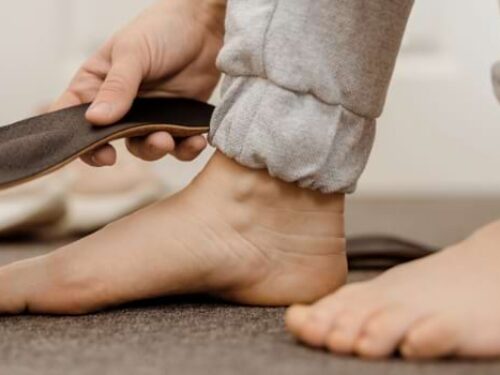
Diabetes & Your Feet
The correlation between foot-related complications and diabetes has been researched extensively over the last several years. The American Diabetes Association encourages diabetic patients to monitor their feet for potential warning signs and other issues. Identifying complications early on the process can be better conducted by a trained podiatrist. However, patients themselves must monitor their feet for developing complications. This observation should include keeping a watchful eye for several different conditions.
Neuropathy
The most common foot complication associated with diabetes is neuropathy. Increased blood sugar levels affect the function of the nerves in the foot leading to a slow and often unnoticed loss of sensation. Burning, tingling, and pain are often early warning signs of diabetic neuropathy affecting the foot.
Ulcers
The development of foot ulcers typically manifests on either the ball of the foot or along the big toe. Early stages of the condition can feature swelling, discoloration, and callused skin. In most cases, ulcers tend to become steadily worse if left untreated due to constant rubbing against shoes/socks. Patients with diabetes and ulcer development should seek the assistance of a podiatrist and other foot-care professionals to diagnose the issue carefully.
Decreased Circulation
Worsening blood flow is a risk factor for many diabetes patients. Signs of decreased circulation include tingling, numbness, and cramps. Remember to rest, eat well, refrain from smoking, and incorporate regular exercise routines to help promote healthy circulation. A non-painful and straightforward vascular study can provide more detailed information about the status of the blood flow to your feet.
Amputation
Amputation is considered one of the most severe diabetic foot-related complications. Fortunately, most amputations can be preventable so long as the patient remains proactive when it comes to their blood glucose and foot health. Regular appointments with a podiatrist can help to diagnose and monitor risk factors for amputation. Discolored skin, foul odors, and ulcers that are not healing can serve as warning signs for a potential amputation.
How Can I Keep My Feet Healthy?
Close monitoring of the condition of your feet is key towards long-term health. Important steps for early detection should include inspection for cuts, sores, red spots, or other abnormalities. Also, practicing proper foot hygiene like cleansing, trimming your toenails straight across properly, and protecting your feet with properly fitting socks and shoes can help stave off diabetic foot complications.
Contact the Foot and Ankle Surgeons of New York today for an appointment and consultation regarding diabetes and other foot-related complications.


